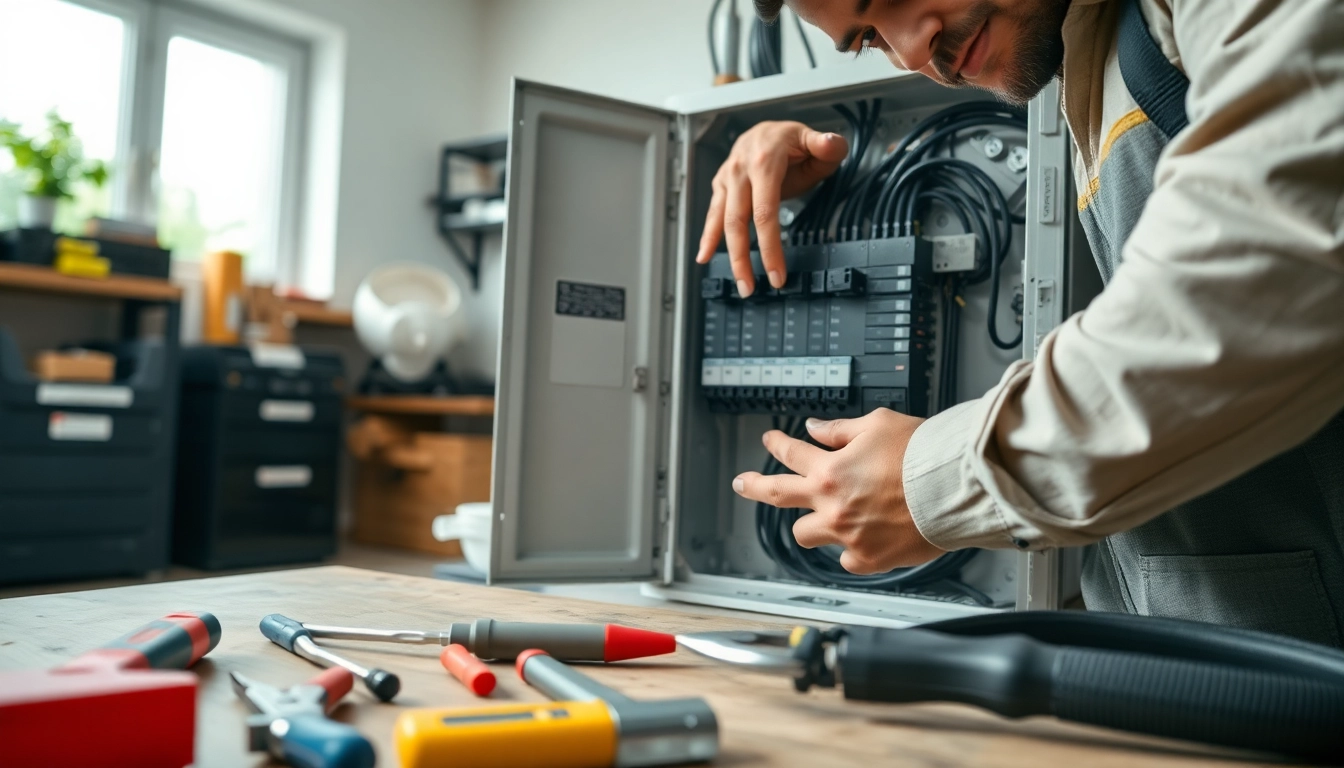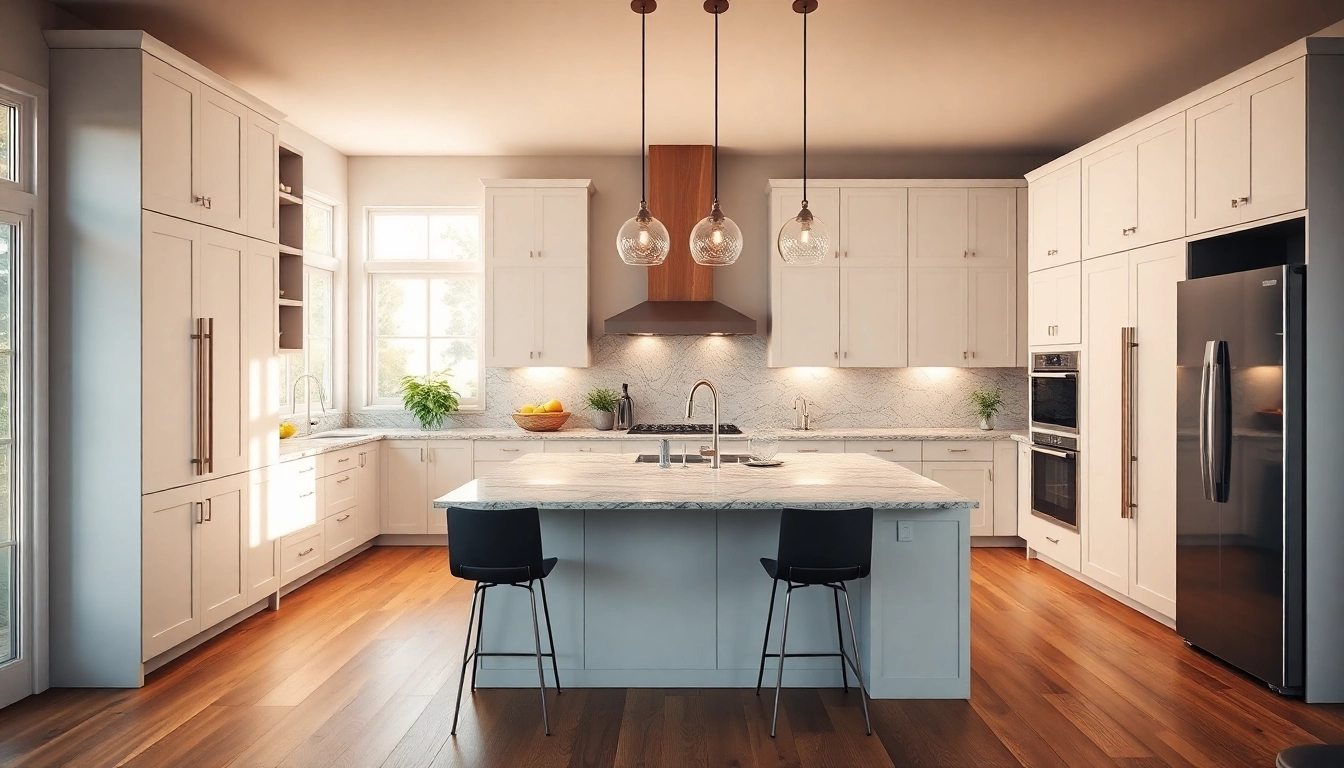1. What is an Electrical Panel Upgrade?
1.1 Definition and Purpose
An electrical panel, also known as a breaker panel, fuse box, or electrical service panel, is a crucial part of your home’s electrical system. It acts as the central hub where the electrical power from your utility company enters your home and gets distributed to various circuits throughout the property. An Electrical Panel Upgrade involves replacing or upgrading this panel to accommodate increased power needs, improve safety, and enhance overall electrical system efficiency.
1.2 Benefits of Upgrading Your Panel
Upgrading your electrical panel brings several key benefits. First and foremost, it increases the amperage supply available, allowing you to power more devices and appliances without overloading the system. This is particularly important as modern households tend to use more electronics than in the past, including high-power appliances like electric vehicles (EVs), air conditioning units, and home theaters.
Moreover, a new panel may offer enhanced safety features that reduce the risk of electrical fires and improve circuit protection. For instance, newer panels can include Ground Fault Circuit Interrupter (GFCI) and Arc Fault Circuit Interrupter (AFCI) breakers which dramatically improve safety. Lastly, an upgraded panel can improve the resale value of your home, as prospective buyers are often keen to invest in properties with modern electrical systems.
1.3 Key Signs You Need an Upgrade
Several telltale signs may indicate that it’s time to upgrade your electrical panel:
- Frequent tripped breakers: If your breakers frequently trip, this could indicate that your panel is overloaded.
- Old panel: If you own a home with a panel that is more than 20 years old, it may not meet the current safety standards.
- Upgrading appliances: If you are adding high-demand appliances or systems (like EV chargers, HVAC systems), your existing panel may not suffice.
- Flickering lights: Lights that flicker or dim when using other devices can signal that the panel cannot handle the current load.
- Burning smells or melted residue: These are serious warning signs of potential electrical problems requiring immediate attention.
2. Assessing Your Electrical Needs
2.1 Understanding Amperage Requirements
The electrical service capacity of your home is measured in amperes or amps. Most homes have either 100-amp, 150-amp, or 200-amp panels, with 200 amps being the standard for newer homes. Understanding your amperage needs involves evaluating your lifestyle and how much electricity you use.
For instance, older homes may only have a 60 or 100-amp service which may no longer be enough for modern lifestyles that include multiple electronics, home offices, and smart home systems. It’s advised to consult with an electrician to determine the appropriate capacity based on your needs.
2.2 Evaluating Appliance and Device Load
Every appliance and electronic device consumes a specific amount of power, measured in watts. To calculate your household’s total electrical load, list out the major appliances and their corresponding wattages. This includes everything from refrigerators, microwaves, and air conditioners to smaller devices.
For example, a standard refrigerator uses about 800 watts, while an electric water heater can use upwards of 4,500 watts. By understanding the combined wattage of your devices, you can determine if your existing panel meets your energy demands or if an upgrade is necessary.
2.3 Future-Proofing Your Electrical System
Future-proofing your electrical system means planning for potential future additions or changes in your energy consumption. As technology evolves, your home might require additional circuits for amenities you may wish to install down the line, such as home automation systems or solar panel systems.
When upgrading your electrical panel, it’s prudent to consider not just your current needs but also what you might add in the future. Many homeowners opt for a 200-amp panel while their current requirement is lower, allowing space for future upgrades without further renovations.
3. The Upgrade Process Explained
3.1 Steps to Prepare for the Upgrade
Preparing for an electrical panel upgrade involves several critical steps:
- Conduct an assessment: Review your current energy usage and assess your future requirements.
- Choose the right panel: Discuss different options with your electrician, examining the types of panels available on the market.
- Obtain necessary permits: Before commencing work, you must obtain local building permits, which may vary based on your location.
3.2 Hiring a Qualified Electrician
Choosing a qualified, licensed electrician is perhaps the most crucial step in the upgrade process. An experienced electrician will not only perform the upgrade safely but also ensure compliance with local electrical codes. Be sure to ask for references, check online reviews, and verify their licensing before making a decision.
3.3 Safety Precautions During the Upgrade
Upgrading an electrical panel can be dangerous if not done correctly. Safety precautions should include:
- Ensuring that the power is completely shut off before beginning the work.
- Using appropriate personal protective equipment (PPE), such as gloves and safety goggles.
- Following the National Electrical Code (NEC) standards and local regulations to ensure all aspects of the installation are safe.
4. Cost Considerations for Upgrading an Electrical Panel
4.1 Average Costs and Budgeting Tips
The cost of upgrading an electrical panel varies widely depending on numerous factors, including the type of panel, amperage level, local labor rates, and any additional repairs needed to the existing system. On average, homeowners can expect to pay between $800 and $4,000 for an upgrade, with most common upgrades from 100 amps to 200 amps averaging about $1,300 to $3,000.
When budgeting for an upgrade, consider potential additional costs for wiring, circuit breakers, permits, and any electrical work that may need to be done to support the new panel.
4.2 Financial Benefits of an Upgrade
While the upfront cost of upgrading your electrical panel can seem significant, the long-term benefits often outweigh these initial expenses. Upgrading to a higher capacity panel can lead to reduced energy costs due to increased system efficiency and the ability to accommodate energy-efficient appliances and systems, such as solar panels, leading to potential cost savings over time.
Besides energy savings, an upgraded panel can significantly bolster your home’s value, making it a more attractive proposition for potential buyers.
4.3 Exploring Tax Credits and Rebates
Many homeowners may be eligible for tax credits or rebates when upgrading their electrical panels, especially if they are enhancing their homes’ energy efficiency. Programs like the Energy Star offer rebates for energy-saving upgrades. Additionally, many local governmental agencies also provide incentives for homeowners who opt for upgrades that support electric vehicle charging or energy-efficient systems.
5. Post-Upgrade Benefits and Maintenance
5.1 Improved Safety and Reliability
One of the most significant post-upgrade benefits is the enhanced safety and reliability of your electrical system. A new electrical panel significantly reduces the risk of electrical fires, equipment damage, and power outages caused by overloading, as modern panels are equipped with superior technology to manage your home’s energy needs efficiently.
5.2 Maintenance Tips for Your New Panel
Maintaining your electrical panel is crucial for ensuring its longevity and safety. Some essential maintenance tips include:
- Regularly checking for signs of wear, such as scorch marks or rust.
- Keeping the area around the panel clear of debris.
- Scheduling periodic inspections with your electrician to ensure everything remains in good working order.
5.3 Long-Term Advantages of an Upgraded System
In addition to increased safety and reliability, a modern electrical panel can provide other long-term advantages. With enhanced capacity, your home can easily adapt to evolving electrical demands, such as growing families or home-based businesses. The panel can also support advanced technologies, including smart home systems that rely on robust electrical infrastructure. Ultimately, an upgraded electrical panel represents a valuable investment in your home’s future.















Leave a Reply